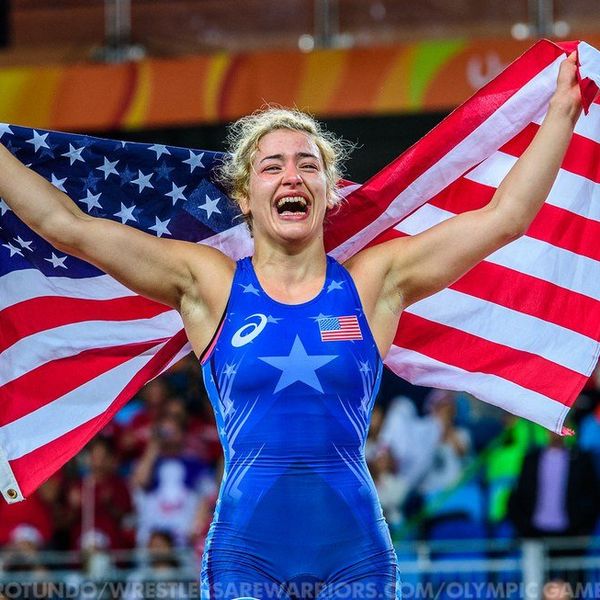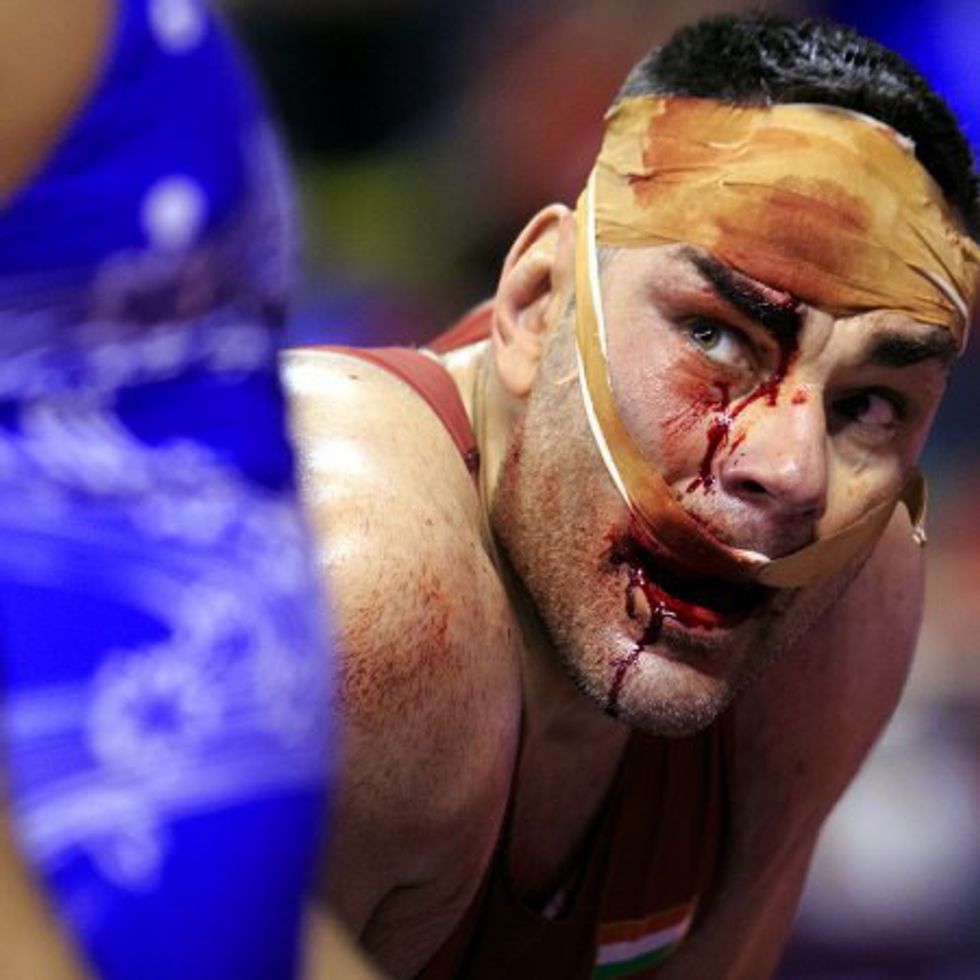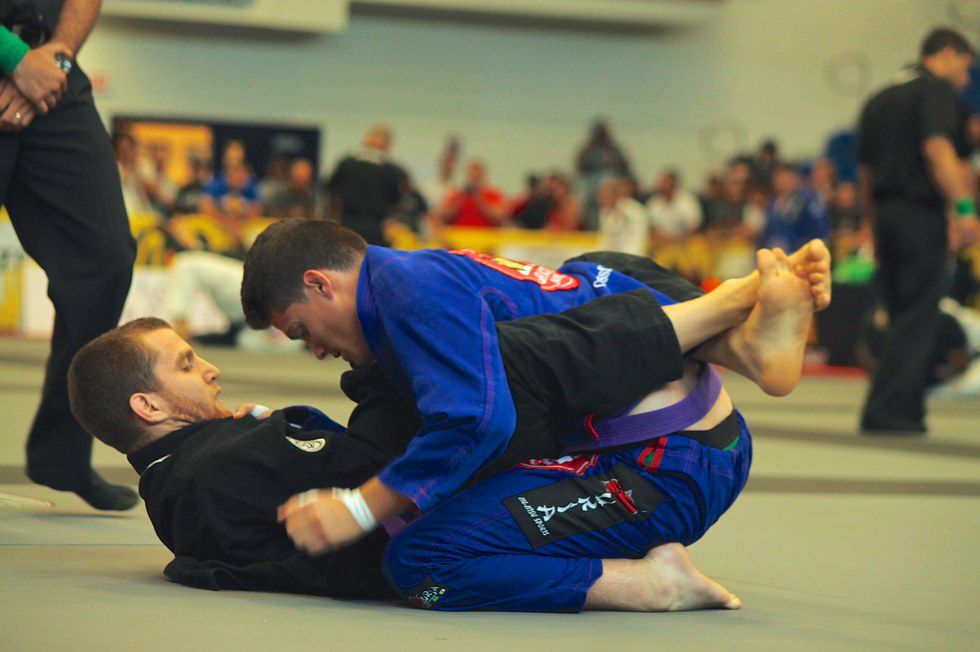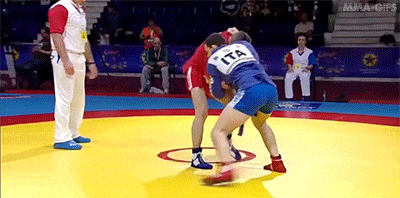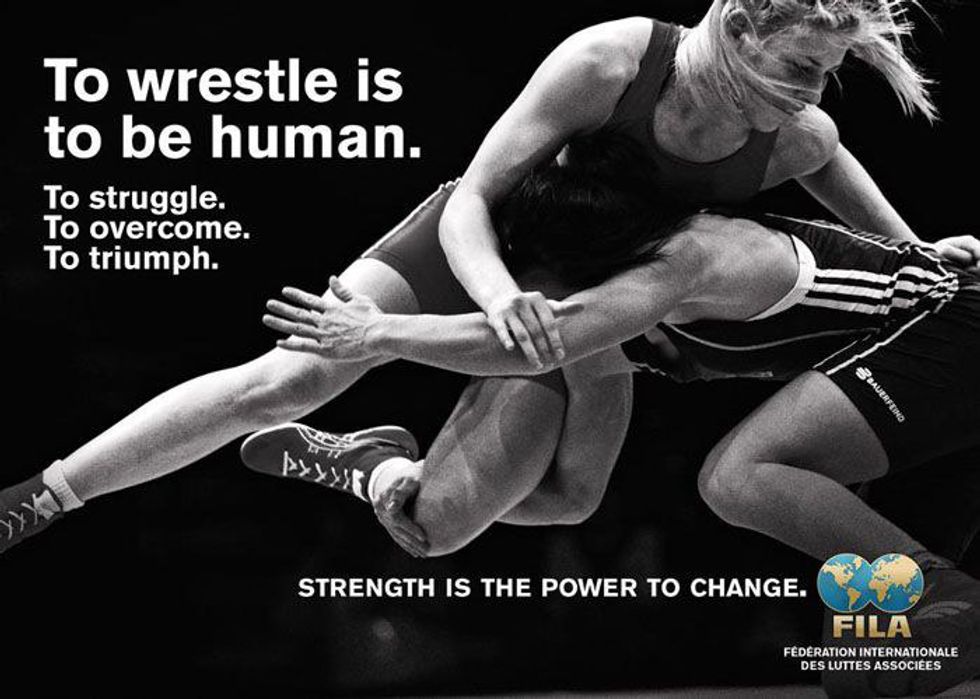This article is long overdue. Since I joined the Odyssey in March, I have almost exclusively covered combat-sports, more specifically, MMA in the UFC as well as collegiate and international wrestling. While these sports are near-and-dear to me, it occurs to me that many lack the institutional context that allows one to appreciate these sports. Allow me to attempt to enlighten you on these violently beautiful sports. I hope that after reading, you can at least appreciate why other people invest themselves in these sports, if not become a fan yourself.
Combat and the Role of Seriousness
The ultimate contest of human potential is competing against another human being in individual competition. It is the most primitive, animalistic, and downright human test there is. Soccer/ futbol may be the most popular international sport and I have a personal appreciation for soccer (though the US Women’s National Soccer Team needs to be paid more and the international men in soccer need a gut-check with all their fake crying and chump-moves) but it is nonetheless a game. “You can’t ‘play’ wrestling.” In a combat-sport, you can’t rely on anything but your mind and body alone.
(Mihaly Deak-Bardos, Greco-Roman wrestler at 130KG; Photo: United World Wrestling)
I argue that grappling (in any of its forms, from Judo to Greco-Roman Wrestling) is the most human of all sport. Mixed Martial Arts is along that continuum as well, arguably closer to the pinnacle of human sport than the various wrestling styles, if only because it is as close to real hand-to-hand combat as a sanctioned-fight can be by integrating grappling and striking.
There must be a distinction made between a life-or-death situation and a sport-fight. While MMA is brutal, bloody, and filled with injury-risks, there are still rules (same goes for grappling arts). Life-or-death situations are what combat-sports intend to emulate, but with the instilled spirit of (Western) sportsmanship within their brutality. However, in a life-or-death situation, you are fighting for your life. No, not for the paycheck that allows you to live the life you want or that allows you to pay your water bill on-time. Literally your life. This is the contextual layer that many people lack when they sign-up for “self-defense” classes, and this ignorance is not necessarily their fault. The average American likely doesn’t live a life of trial and tribulation. They are secured in their belief that they get to go home to a roof that the bank can’t take from them, driving in a car that won’t be repossessed. Their hardest test is the deadlines their boss want met, not wondering when their next meal will come. Why do you think people keep saying, “this generation is soft”? Because some kids have it so easy, they can’t even relate to the struggle their parents went through a generation ago.
I am not diminishing or minimizing another person’s struggle or milieu. But this is reality. We often take our security for granted. This is the seriousness of self-defense and martial arts; the reality of life-and-death is (what ought to be) the context of learning to defend one’s self outside of a sport. Note: beware the false prophets of fake martial arts that prey upon the paychecks of good people by teaching “techniques” that don’t work and providing a sense of security that could very well leave students (customers?) maimed or killed.
The line of seriousness becomes blurred between sport and martial art because many arts double as both (for example, the Olympic sport of Judo). A judo throw is the same on the Olympic stage as it is in a dark-alley. A suplex is the same on the wrestling mat as it is on hardwood. Combat-sports are dangerous because their origin lies in the serious foundation of martial arts. Ultimately, though, the goal is to win against your opponent, not kill them. There is a defined duration of martial competition. A referee officiates, someone wins and someone loses. When time is elapsed, everyone goes home safely. With this distinction between self-defense and sport in mind, let’s peek into the world of combative-sports.
Mixed Martial Arts and the Brutality of a Fight
MMA in its modern form has evolved into a worldwide sport. The impetus of MMA was to combine the formal martial arts (for example, Muay Thai, Brazilian Jiu Jitsu, boxing, karate, among others) and have them compete against each other. From its inception in the 90s, the Ultimate Fighting Championships (a promotion, NOT a sport; MMA is to football as to the UFC is to the NFL) was founded by the Gracie family on the idea that Brazilian Jiu Jitsu (BJJ) is the superior martial art. Today, MMA has emerged as the premier combat-sport with martial artists and professional fighters the world over representing an array of disciplines training to not only throw punches and kicks, but utilize submission holds, grappling, and technique to become a complete fighter.
Particular to MMA, brutality has been a big obstacle to legitimacy. With boxing being the most prominent striking sport in the US up to that point, the emergence of a sport where someone was encouraged to elbow, knee, and kick their opponent essentially shattered the way people perceive a fight. The brutality is still there, but it has been refined with the creation of a rule-scheme and ever-constant progress toward legitimacy. The beauty of the sport lies within the violent nature (again, keep in mind the serious nature of martial arts; MMA is a sport but those are still people fighting one-another). While the uncensored violence and strikes may be appalling at first, one begins to appreciate the technical soundness, poise, and sheer heart that is displayed by high-level fighters.
(Fan-made highlight of one of the greatest mixed martial artists of all time, former UFC Middleweight Champion, Anderson Silva.)
Grappling and BJJ
Half of a fight is grappling, and it is this half that I am most fond of and comfortable with, more specifically wrestling (American folkstyle, Olympic freestyle, and Olympic Greco-Roman) and a little bit of BJJ.
The first hurdle for anyone that has no idea about grappling is getting over the platonic (“intimate but not sexual”) contact. The idea of two guys (or a guy and a gal or two gals) rolling around in spandex is a quick and ready deterrent for any proposed new fan. The seemingly “sexual” positions, the hand-placements, and violation of personal space is hard to get over for many people. The reality of these ignorant comments is that the context is completely wrong. Yes, personal space is violated. That’s the point. These sports are combative, quite literally “putting hands on somebody.” When someone attacks another, whether it be a mugging, a strong-arm robbery, or a sexual assault, personal space is violated. These sports dare the individual to learn to fight (without strikes) out of these positions of vulnerability, to get themselves away from danger and defend themselves effectively.
This tie to self-defense is more clearly defined in Brazilian Jiu Jitsu. Often called "ground-fighting," the idea behind BJJ is learning to fight off your back whilst using the entire body. Most fights in the street (or at the bar) will end up on the ground, knowing how to defend yourself there is helpful, to say the least. As a sport, BJJ is focused on achieving the submission (a choke or joint lock that either leaves the opponent injured, unconscious, or forces the opponent to give up). I have not covered Grappling (though often used as a generic term, “Grappling” is also a sport of its own) or BJJ, but mention the disciplines because of its role in the foundation of Mixed Martial Arts from inception to the present. In the modern field, not knowing any BJJ will surely lead a fighter to lose. It is a necessity at the professional level, and hence it is common to see fighters, off their back, wrap their legs around their opponent’s body (in what is called a “closed guard”). At first glance suggestive, this position is achieved to create space between oneself and the opponent (much easier to defend yourself when you don’t have to bear the full weight of the opponent), and its effectiveness is proven in its use in MMA over the years. The closed guard is one of many examples of “awkward” positions that are nonetheless utilitarian in a fight or a grappling match. In BJJ, a "gi" is traditionally worn, but "no-gi" competitions have also developed as an alternative form of competition. A gi is often an all-cotton uniform that is also prominent in Judo, Karate, Taekwondo, Hapkido, and other Korean/ Japanese martial arts. Grappling is done without a gi.
(The competitor in the black gi, left, has his opponent in the blue gi in a closed guard.)
Wrestling
Wrestling is the ultimate martial art and human sport. It is transcendent of sociocultural factors. Wrestling is in the Bible (Genesis 32:22-32) and is depicted on Greek vases dating to c.500 BCE. It was one of the three original sports sponsored by the NCAA in the United States. There are forms of wrestling in every culture, and it is what anyone with siblings can attest to doing in their early youth.
Clearly, I have a bias for the sport of wrestling. That said, wrestling doesn't lend itself to the casual fan. There are two Olympic styles with different rule-schemes, and American folkstyle is the most popular style in the United States in front of the Olympic styles, making for three sets of rules that one can venture into (really, it's like following three sports). The use of the singlet immediately deters the vast majority of people because swimmers, track athletes, volleyball players, and others are completely within bounds with their skin-tight uniforms, but wrestlers are out-of-bounds with their skin-tight uniforms (insert sarcasm here). While the layman may be understandably confused by the sight of a wrestling match, its merits and lessons overcome the initial awkwardness.
(A video narrated by Jay Mohr, created during the Save Olympic Wrestling movement in 2013 that illustrates the dedication necessary to wrestle. Note: Olympic Wrestling has been kept on at least through the 2024 Games.)
Character is built in wrestling, but the efficacy of wrestling as a martial art is proven in the world of Mixed Martial Arts. A large portion of UFC champions were wrestlers, from Chuck Liddell to Miesha Tate. The mental and physical skills that are instilled in wrestling have translated time and time again into Mixed Martial Arts success. It is a practical skill-set for combat.
Wrestling in any of its forms/ styles seeks to test one against another. It is a sport that asks nothing from its athletes but everything they could possibly give. Aggressive cutting weight regimens are often involved. Cutting weight is common across any sport where weight-classes are involved, but in wrestling in particular, high school wrestlers are often expected to "make weight" up to 3-4 times in a week, while college wrestlers are expected to make weight for the majority of weekends for over a quarter of the year. These are much higher volumes of weigh-ins than, say, MMA, where a fighter may make weight 4 times in a year. Thus, the sport requires strict discipline in the consumption of life-providing substances such as water and Calories. It requires hours of mastering technique and learning about one's body. Wrestling is life in itself. It is cruel, unforgiving, difficult, and beautiful all at once. Human against human.
Other Grappling Arts
Unfortunately, I am not the all-around master I wish I was. I appreciate these martial arts greatly for their value to developing good overall people and teaching good lessons and ethics, including the small piece of sport within them. However, as I have not done these sports myself nor do I follow them like I follow wrestling and MMA, I cannot earnestly speak on them. Nonetheless, a couple more popular grappling arts include Judo, a martial art and Olympic sport that originated in Japan. The ultimate victory in Judo is the "ippon" or the match-ending throw.
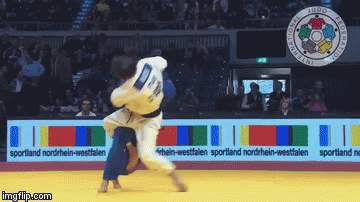
Conclusion
Ultimately, these sports are all hyper-niche. The vast majority of people won’t follow Olympic sports or alternative sports (e.g., X-Games, Major League Gaming) unless they themselves are invested in the sport. Their rule-schemes are convoluted and make no sense to someone who has never had any reason to learn them. That said, there is a world out there in combat-sports in which competitors compete against each other in the most human of ways. They get as close to life-and-death combat as is rationally attainable with a given set of rules. They expose themselves to the world in lycra-singlets and compression-shorts and sports-bras in an unadulterated way to see who has more in their core as a human.
I know that the population of combat-sports fans is a minority of dedicated practitioners. These sports don’t lend themselves to spectators often, if anything they often fail miserably in promoting for the casual audience. If you’ve never done a grappling art before, I invite you to try your hand at it. Don’t worry about being good or bad, just allow yourself to use your body in a way you didn’t even know existed while learning practical self-defense. If you’re already a grappler, I hope you may use this article as a resource to open up your friends’ eyes to the sport(s) you yourself are infatuated with.

